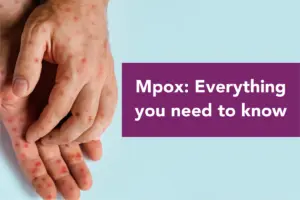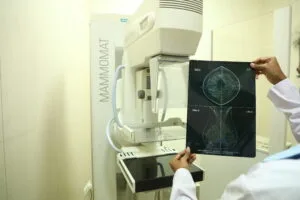Bone Health – Types, Symptoms & Causes

Bone is living tissue that makes up the skeleton of the body. Bone serves essential functions in the body, including locomotion, soft tissue support and protection, calcium and phosphate storage, and bone marrow storage—any imbalance of bone resorption and formation results in several bone diseases. 1 in 3 women and 1 in 5 men worldwide above the age of 50 years will experience an osteoporotic fracture.
What are the types of bone disorders?
Common bone disorders in adults and children include the following:
- Osteoporosis: A condition in which the body either loses too much bone or makes too little bone. As a result, bones become brittle and can break as a result of a fall or, in severe cases, can result due to minor bumps. It can happen at any age, but it is more common in older people, especially women.
- Fracture: A complete or partial break in the bone either due to major traumatic injury or even minor trauma due to excessive calcium loss from the body.
- Joint problems:
- Osteoarthritis (OA): A joint problem that occurs when the flexible tissue at the ends of bones wears down.
- Rheumatoid Arthritis: An autoimmune and inflammatory disorder, wherein your immune system mistakenly attacks healthy cells in your body, resulting in primarily affecting joints, including those in the hands and feet.
- Spondyloarthritides: A group of diseases characterized by inflammation in the spine and joints.
- Systemic Lupus Erythematosus (SLE): A condition where the immune system starts attacking its tissues, considering them as foreign bodies.
- Gout: A form of joint inflammation wherein too much uric acid crystallises and deposits in the joints. It is associated with severe pain, redness, and tenderness in joints.
Are there any early symptoms of bone disorders?
The majority of bone disorders appear to have no early warning signs or symptoms; however, the first sign could be a pain in the joints, hips, spine, or wrist. As a result, getting regular and timely check-ups of bone density examinations every few years is the best approach to tell if our bones are healthy. The primary goal of the test is to detect and treat significant bone loss that could develop to osteoporosis and prevent fractures and disability.
Know the causes and risk factors of bone disorders
- Osteoporosis:
- Having a family history
- Lifestyle factors like smoking, drinking alcohol, little to no exercise, and diet which lacks vitamin D and calcium
- Long-term use of certain medications, such as corticosteroids, causes bone thinning.
- Low estrogen in women
- Low testosterone in men
- High levels of thyroid hormone
- Fracture:
- Age & gender – 1 in two women over the age of 50 are at higher risk to acquire fracture in her lifetime.
- Having a family history
- People with comorbidities – diabetes
- Lifestyle factors like smoking or drinking alcohol
- Joint problems:
- Osteoarthritis (OA):
- Having a family history
- Repeated stress on the joint.
- Age— increases the risk of developing OA.
- Gender—Women are more likely than men to develop OA, especially after the age of 50.
- Obesity—Extra weight puts additional strain on joints, particularly weight-bearing joints such as the hips and knees. This stress raises the likelihood of OA in that joint. Obesity may also have metabolic consequences that raise the risk of OA.
- Certain metabolic conditions like diabetes and excess iron production in the body (hemochromatosis).
- Rheumatoid Arthritis:
- Gender – Women are more likely than men to develop rheumatoid arthritis.
- Age – Can occur at any age, but it most commonly begins in middle age.
- Having a family history.
- Cigarette smoking increases your chances of building rheumatoid arthritis, especially if you have a genetic predisposition to the disease. Smoking appears to be linked to increased disease severity as well.
- Excessive weight or overweight – people appear to be at a slightly higher risk of developing rheumatoid arthritis.
- Spondyloarthritides:
- Gender – Men are two to three times more likely to get ankylosing spondylitis than women.
- Having a family history.
- Inflammatory bowel disease
- Certain bacterial infections, such as salmonella or sexually transmitted bacteria
- Systemic Lupus Erythematosus (SLE):
- Gender – Women of childbearing ages—15 to 44 years—are at greatest risk of developing SLE.
- Having a family history.
- Being exposed to smoke, excessive sunlight, or chemicals
- Infections caused by bacteria and viruses – Epstein-Barr virus
- Gout:
- Gender – Men are more susceptible than women. Men between the ages of 30 and 50 — whereas women generally develop signs and symptoms after menopause.
- Overweight – Body tends to produce more uric acid and difficulty in elimination by kidney.
- Medical conditions – untreated high blood pressure and chronic conditions such as diabetes, obesity, metabolic syndrome, and heart and kidney diseases.
- Recent surgery or trauma can elicit a gout flare.
- Osteoarthritis (OA):
How to keep bones healthy?
- Eat calcium and protein rich foods – whole milk, almond milk, or yogurt with your oatmeal
- Include more nuts like almonds, walnuts, and pistachios, and leafy greens in your daily diet.
- Quit smoking and drinking alcohol.
- Get at least 5 to 10 minutes of daily sun exposure for the body to absorb vitamin D naturally.
- Consider walking 20 to 30 minutes daily and participate in some weight bearing exercises.
Recommended tests for bone disorders
At Suburban Diagnostics, we offer bone and joint health test:
- BMD (DEXA-Total body)
- Calcium
- Phosphorus
- Magnesium
- Uric Acid
- Alkaline Phosphatase (ALP)
- CCP-Ab (Anti CCP Antibody)
- Rheumatoid factor (RF)
- Proself Bone & Joint Panel



